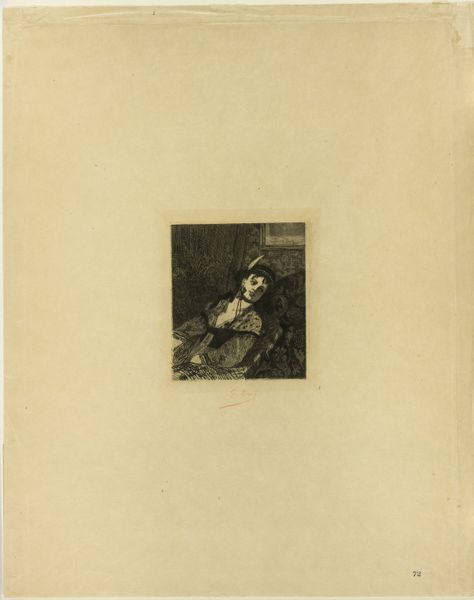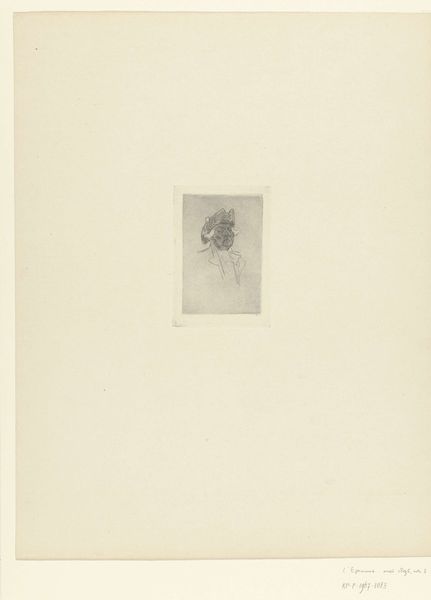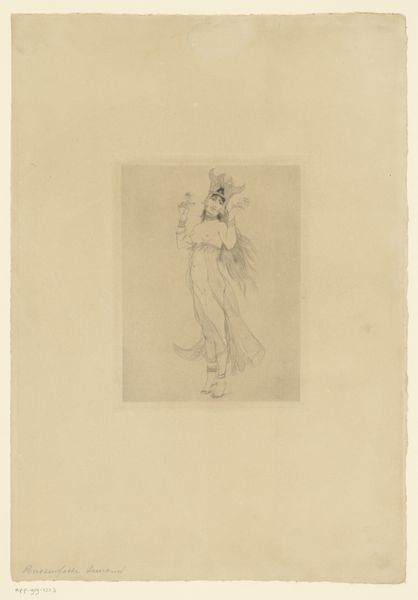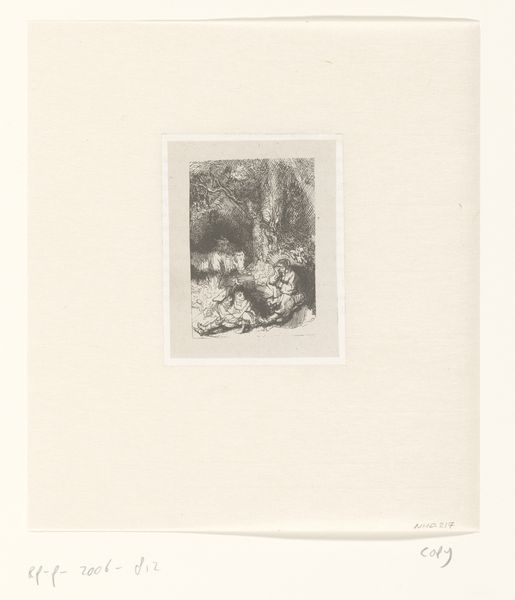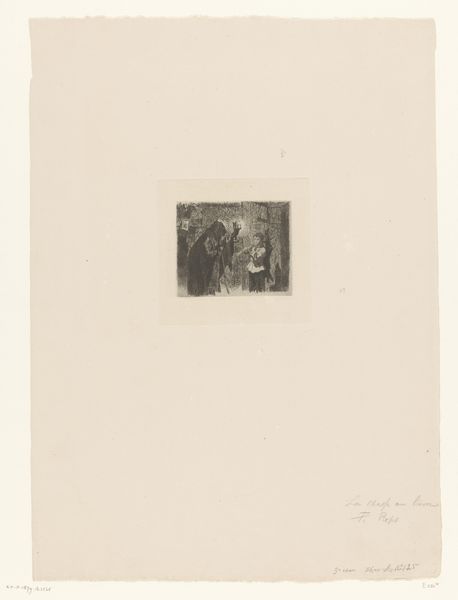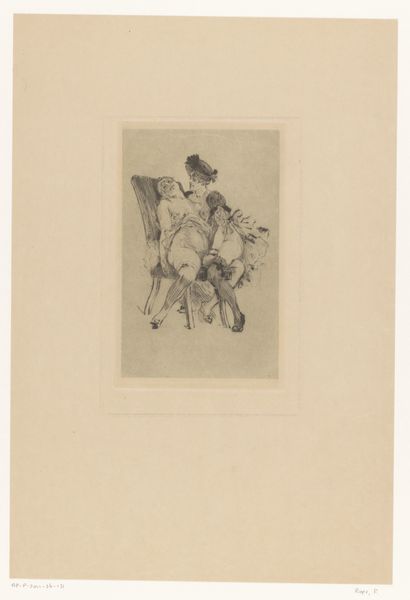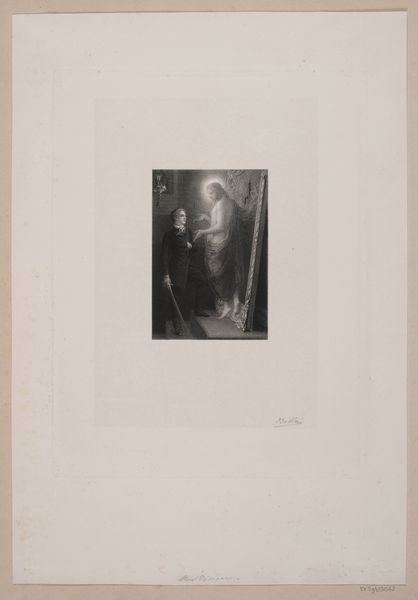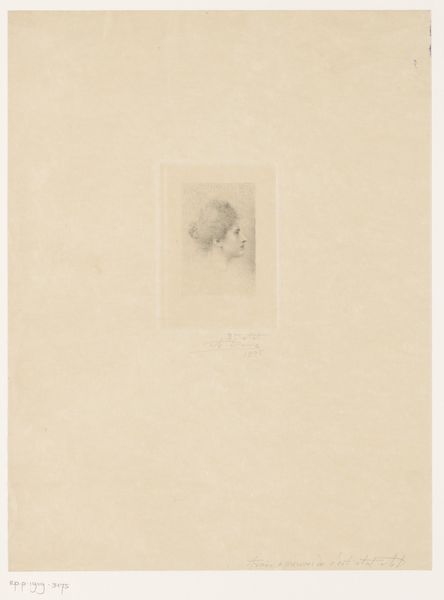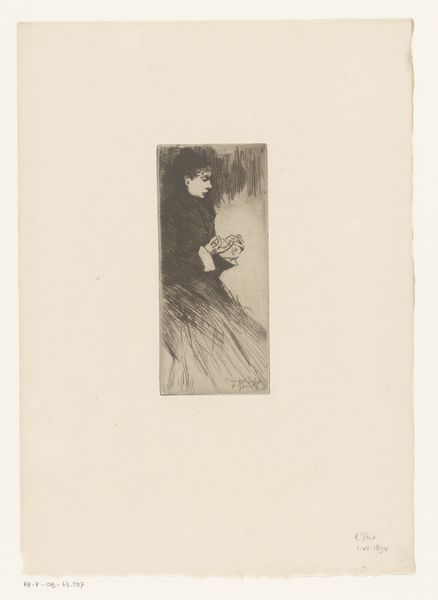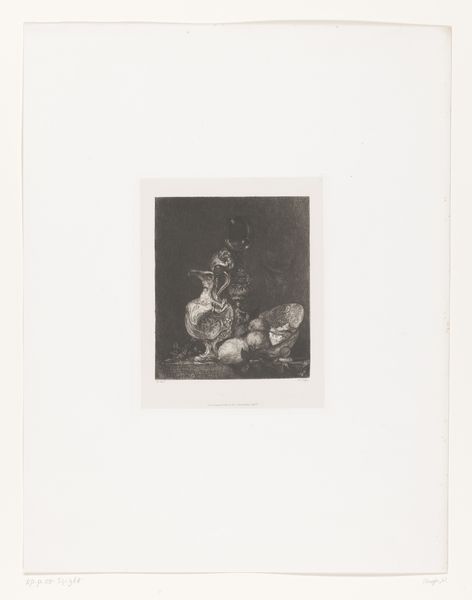
drawing, print, etching
#
portrait
#
pencil drawn
#
drawing
# print
#
etching
#
pencil sketch
#
symbolism
#
realism
Dimensions: height 178 mm, width 123 mm
Copyright: Rijks Museum: Open Domain
Editor: So, here we have Félicien Rops' "Young Woman with a Fan," created around 1875. It's an etching and print currently held at the Rijksmuseum. It has a kind of ephemeral quality, almost like a dream. What's your take on it? Curator: It's funny you say dream, because it feels more like a fleeting thought, doesn't it? A quick charcoal sketch lifted from a larger, possibly slightly wicked narrative. Rops was so attuned to the undercurrents of society; can't you just imagine the world he inhabited? Are we looking at innocence here, or intrigue, carefully hidden? I'd say definitely intrigue. The fan is less for keeping cool and more for…hiding secrets, wouldn't you agree? Editor: Definitely! The fan does give that sense of secrecy and hidden intentions. I can imagine someone hiding behind a fan while overhearing gossip. How does this connect to his Symbolist leanings? Curator: Symbolism isn't always screaming from the rooftops; here it’s a whisper. Rops uses suggestion rather than outright statement. Think about the fan again – it's not just an object, it represents a barrier, a way to curate the gaze of the world. Is she concealing something, or deflecting unwanted attention? She might be sizing up a potential suitor, while concealing her smirk behind that feathered frond. Editor: So, the symbolism comes from the subtle ambiguity he creates. Curator: Precisely. It is almost like the fan creates the ambiguity. Like a paper wall within this portrait. Editor: It really changes my initial impression. What seemed fleeting and light now feels heavy with hidden meaning. Curator: That is the joy of art. Let us both never hide behind a fan again.
Comments
No comments
Be the first to comment and join the conversation on the ultimate creative platform.

